Home » Gear Reviews » Hiking & Camping » Sleeping Pads » Lightweight Sleeping Pads » Therm-a-rest ProLite
Therm-a-rest ProLite Review
November 22, 2018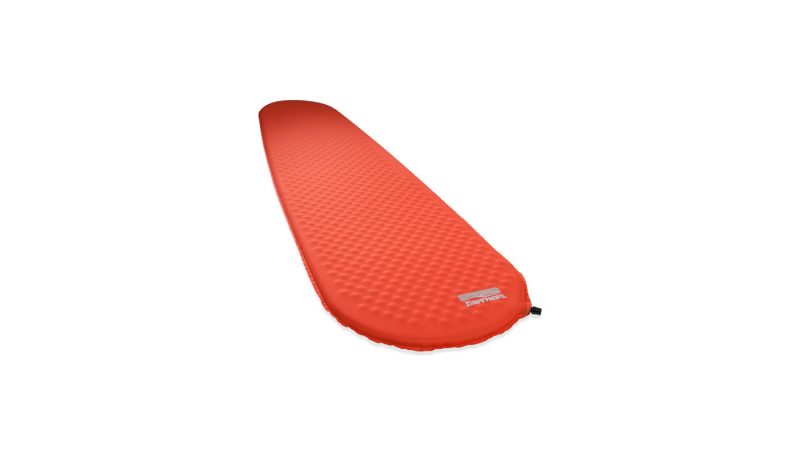





















 84
84 The Good
- Comfortable
- Warm
- Durable
- Easy to inflate
- Inexpensive
The Bad
- Bulky
- Heavy
- Difficult to pack
The Therm-a-Rest Prolite is a lightweight self-inflating sleeping pad. This means that when it is time to sleep, the only preparation required is to unscrew the valve and lay the pad out on the ground. Then the pad inflates on its own. Before sleeping, we found that most users will want to top it off with a couple breaths, but this requires very minimal effort. The ProLite is available in Extra Small, Small, Regular, and Large sizes, so a user can easily select the appropriate length for their height or choose a shorter length to keep the weight down.
Weight
At 18.6 ounces for a size Regular, the ProLite is the heaviest model in our lightweight sleeping pad test. The lightest pad we evaluated was just over 10 ounces—8.5 ounces lighter than this one—which is a significant difference. However, the ProLite is fairly light when compared to other self-inflating pads, most of which are thick, large, and heavy. Due to the weight and bulk of this pad, we found that we rarely used it for backpacking trips when we wanted to keep our pack weight low, but it worked well for car camping where weight was not an issue and comfort and ease-of-use were more important.
Packed Size
This is a self-inflating pad with a die-cut foam core, which increases the bulkiness when compared to air construction inflatable pads (most of the other models in this test are that style). Air construction inflatable pads are like balloons: thin empty shells waiting to be filled with air. This pad is more like sponge: it is full of foam with cut holes and those holes expand and fill with air. The foam inside has diagonal cut channels and a tapered shape to keep the bulk as low as possible. But this foam does take up space, so when it is rolled it is larger than any of the air construction pads we tested: an 11 by 4 inch package. However, when packed it is significantly smaller than either of the closed-cell foam pads we tested. At least the ProLite can be kept inside a backpack, where the other foam models need to be carried on the exterior. The PoLite’s self-inflating design bridges the gap between the other two styles (closed-cell foam and air construction) in terms of size, ease of use, and packability.
Comfort
Among our testers who prefer a firm sleeping surface, this mat is thought to be more comfortable than the pool-raft feel of the NeoAir XLite or Nemo Tensor. For those who like soft and squishy sleeping surfaces, this one-inch thick mattress will not feel like enough padding. The general consensus among our testers was that this pad was plenty comfortable. We found that the combination of foam core and air gives it an even, spongy feel that is more welcoming and less bouncy than that of the fully air-filled models.
Warmth
With and R-value of 2.4, the ProLite is one of the warmest sleeping mats in this test, which is surprising since it is also one of the thinnest. The combination of foam and air inside the pad helps to retain heat, and Therm-a-Rest claims that the channels cut into the foam hold more warm air than straight cut foam does. When compared to the Sea to Summit Ultralight Mat, which is an entire inch thicker (2 versus 1), the ProLite is significantly warmer. The Ultralight has an R-value rating of only 0.7 compared to the ProLite’s 2.4. The ProLite is more than adequate for three season backpacking, and does not need to be reserved for summer-only trips, like the Sea to Summit Ultralight or the thin Big Agnes Third Degree. For someone in search of the best warmth-per-price ratio, the ProLite hits the perfect balance.
Durability
The foam core in the ProLite comes with a benefit: if your pad pops, there is still a layer of foam to insulate you from the cold ground, albeit a thin layer. If the pad does sustain a puncture it can be patched in the field, but this dual layer provides a little extra insurance against catastrophe. Our testers felt that the ProLite was sturdier than the other inflatable pads we evaluated. It is made with a 50D polyester face fabric, and this high denier means that the fibers in the material are denser, which corresponds to a fabric that is super tough and rip-resistant. We used the ProLite for a couple of open-air bivies in the national forests of Oregon without a ground cloth or any other surface between the pad and the pine-needle strewn ground, and the Prolite survived without a scratch. For someone who is hard on gear, this might be a more reassuring choice than a delicate air construction mat, which is much more vulnerable to punctures. We talked to a Pacific Crest Trail Thru-hiker who chose to hike the whole trail with a ProLite sleeping mat because it was inexpensive and durable, so she was able to confidently and comfortably use it for over 2600+ miles of hiking. That is a good testament to this pad’s burliness.
Ease of Use
The Prolite is the only self-inflating pad in this test. A self-inflating pad combines the features of a foam pad and an air construction inflatable pad: a foam core expands as it fills with air. To use it, it needs to be unrolled and the valve opened. Then it can be left alone for a while to do its thing. It may need to be topped off with a few puffs of air, but it may not need it. If in a hurry, it can easily be inflated fully simply by breathing into it, and that will still require less time and effort than blowing up the 3-inch thick Nemo Tensor. In terms of preparation for bed, our testers agree that this is almost as easy as the closed-cell foam pads, which don’t require any inflation at all. Where this model suffers is in the re-packing. It takes quite a bit more effort to press all the air out of this pad than with the pads that only have air inside. We found ourselves rolling and re-rolling it a few times in order to fit it into the stuff sack.











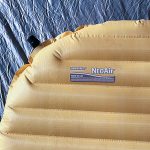
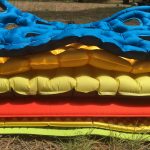


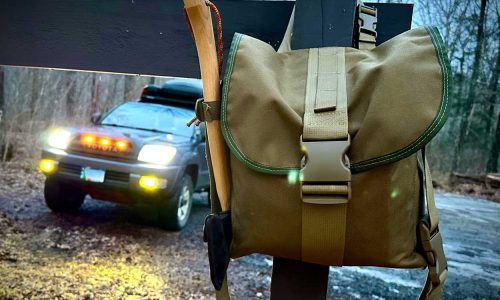



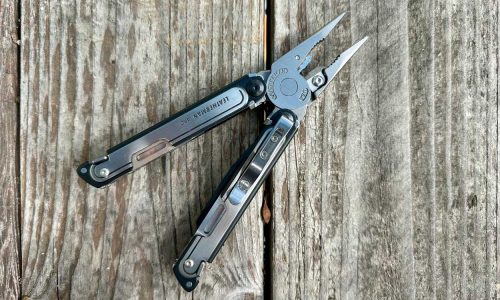
No reviews have been posted for this product.
Use this gear?
Join Gear Nation and leave a review!
Create an Account